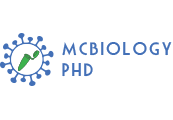Research field (sample da Campello)
In the last years, I focused my attention on the molecular mechanisms underlying autophagy, in particular mitophagy, and cell death induction in cancer. We are studying the effect of Ophiobolin-A (OP-A) administration to melanoma cell lines, with particular attention to mitochondrial damage and signalling. We found that OP-A treatment results in mitochondrial damage, mitophagy induction, and cell death induction. Of interest, is the ability of this molecule to induce different modalities of cell death, apoptosis vs. necroptosis, depending upon the presence of the BRAFV600E mutation as well as the availability of glucose as a source of energy. We are now investigating in details, which are the molecular mechanisms responsible for this shift, and which could be the impact of autophagy modulation in this context.
We are also investigating whether interfering with mitophagy and/or mitochondrial dynamics could be of impact in potentiating OP-A induced cell death in melanoma.
Publications
-
Strobbe D, Robinson AA, Harvey K, Rossi L,Ferraina C, de Biase V, Rodolfo C, Harvey RJ and Campanella M. (2018) “Distinct Mechanisms of Pathogenic DJ-1 Mutations in Mitochondrial Quality Control” Front. Mol. Neurosci. 11:68. doi: 10.3389/fnmol.2018.00068
-
Rodolfo C, Campello S, Cecconi F. (2017) “Mitophagy in neurodegenerative diseases” Neurochem Int. Aug 8. pii: S0197-0186(17)30087-6. doi:10.1016/j.neuint.2017.08.004.
-
Poerio N, Bugli F, Taus F, Santucci MB, Rodolfo C, Cecconi F, Torelli R, Varone F, Inchingolo R, Majo F, Lucidi V, Mariotti S, Nisini R, Sanguinetti M, Fraziano M. (2017) “Liposomes loaded with bioactive lipids enhance antibacterial innate immunity irrespective of drug resistance” Sci Rep. Mar 27;7:45120. doi:10.1038/srep45120.
-
Rodolfo C, Rocco M, Cattaneo L, Tartaglia M, Sassi M, Aducci P, Scaloni A, Camoni L, Marra M. (2016) “Ophiobolin A Induces Autophagy and Activates the Mitochondrial Pathway of Apoptosis in Human Melanoma Cells” PLoS One. Dec 9;11(12):e0167672. doi: 10.1371/journal.pone.0167672. eCollection 2016.
-
Nazio F, Carinci M, Valacca C, Bielli P, Strappazzon F, Antonioli M, Ciccosanti F, Rodolfo C, Campello S, Fimia GM, Sette C, Bonaldo P, Cecconi F. (2016) “Fine-tuning of ULK1 mRNA and protein levels is required for autophagy oscillation”. J Cell Biol. Dec 19;215(6):841-856. Epub 2016 Dec 8.
-
Rodolfo C, Di Bartolomeo S, Cecconi F. (2016) “Autophagy in stem and progenitor cells” Cell Mol Life Sci. Feb;73(3):475-96. doi: 10.1007/s00018-015-2071-3. Epub 2015 Oct 26.
-
Piacentini M, D’Eletto M, Farrace MG, Rodolfo C, Del Nonno F, Ippolito G, Falasca L. (2014) “Characterization of distinct sub-cellular location of transglutaminase type II: changes in intracellular distribution in physiological and pathological states” Cell Tissue Res. Dec;358(3):793-805. doi: 10.1007/s00441-014-1990-x. Epub 2014 Sep 11.
-
Piacentini M, D’Eletto M, Falasca L, Farrace MG, Rodolfo C. (2011) “Transglutaminase 2 at the crossroads between cell death and survival” Adv Enzymol Relat Areas Mol Biol.;78:197-246.
-
Nicoll WS, Sacci JB, Rodolfo C, Di Giacomo G, Piacentini M, Holland ZJ, Doerig C, Hollingdale MR, Lanar DE. (2011) “Plasmodium falciparum liver stage antigen-1 is cross-linked by tissue transglutaminase” Malar J. Jan 21;10:14. doi:10.1186/1475-2875-10-14.
-
Rodolfo C, Ciccosanti F, Giacomo GD, Piacentini M, Fimia GM. (2010) “Proteomic analysis of mitochondrial dysfunction in neurodegenerative diseases” Expert Rev Proteomics. Aug;7(4):519-42. doi: 10.1586/epr.10.43.
-
Malorni W, Farrace MG, Matarrese P, Tinari A, Ciarlo L, Mousavi-Shafaei P, D’Eletto M, Di Giacomo G, Melino G, Palmieri L, Rodolfo C, Piacentini M. (2009) “The adenine nucleotide translocator 1 acts as a type 2 transglutaminase substrate: implications for mitochondrial-dependent apoptosis” Cell Death Differ. Nov;16(11):1480-92. doi: 10.1038/cdd.2009.100. Epub 2009 Jul 31.
Di Giacomo G, Lentini A, Beninati S, Piacentini M, Rodolfo C. (2009) “In vivo evaluation of type 2 transglutaminase contribution to the metastasis formation in melanoma” Amino Acids. Apr;36(4):717-24. doi: 10.1007/s00726-008-0119-5. Epub 2008 Jul 2.


